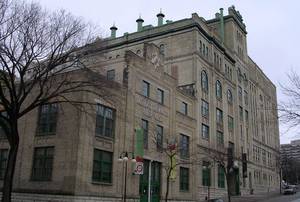Diseases caused by fungi may affect various parts of the body, but affect the skin most often. One such fungal disease is athlete’s foot which is caused by parasitic fungi that usually attack the feet. A lot of people are troubled by athlete’s foot, inasmuch as the fungi which cause this disease are spread from contaminated floors surrounding showers and pools.
In athlete’s foot, the skin between the toes is most often affected. This fungal disease may, however, spread to any part of the feet and may develop suddenly on the hands as well. What emerges on the hands though is usually caused by absorbed toxins in the bloodstream rather than by the fungi themselves.
As the fungal disease develops, cracks or blisters become manifest in the skin. The affected skin later softens, turns white, and peels off in flakes. The person with athlete’s foot experiences burning and itching; there is pain in some cases. Also, athlete’s foot is more severe in warm than in cool weather.
A person with athlete’s foot should keep the affected skin areas as dry and cool as possible. It is advised that he wears open-toed shoes or sandals. He should refrain from walking barefoot about the house, in particular the bathroom. Before using the bathtub, the infected person should soak his feet for about five minutes in a warm, saturated solution of boric acid. These measures are meant to protect other members of the household from being infected with the fungal disease.
Every night at bedtime, the person should wash his feet briefly with mild soap and warm water. After this, he should soak his feet for about thirty minutes in a warm, saturated solution of boric acid. A warm saline solution may be used if boric acid solution is not available. Saline solution can be made by mixing a tablespoonful of table salt to a quart of water. With a bit of gauze, the person should pick and rub away all loose bits of skin. He should take care in not getting any of the contaminated material under his fingernails. Then he should apply an antifungal cream (example, clotrimazole), working it carefully into the affected skin, particularly between the toes.
The remaining medicated cream should be wiped away with dry gauze every morning; the affected skin area should be dusted thickly with antiseptic powder. It is recommended that the athlete’s foot sufferer wear white cotton hose which should be changed every day. Proper laundering of used hose should be by boiling for about ten minutes to avoid reinfection.
Sometimes, sores may appear on the hands. If this happens, the person should use only mild ointments. In case itching is severe, he should apply one percent phenol in calamine lotion. Once the sores on his feet have healed, those on his hands will probably disappear.
To prevent a recurrence of symptoms of the fungal disease after the infection appears to be cured, the person should apply two percent ammoniated mercury ointment every night, and talcum powder containing one percent of salicylic acid every morning; this treatment should be carried on for several weeks. The same powder should be dusted into his shoes daily.
In a severe case of athlete’s foot, the infected person should keep off his feet as much as possible and use the soaks and medicated cream mentioned above (fifth paragraph) two times a day instead of once. In a persistent case of this fungal disease, a dermatologist should be consulted. The antifungal drug griseofulvin is usually helpful in such a case, but this drug requires the prescription of a physician.
Sources:
1. Athlete’s Foot – Home Treatment”, on WebMD – http://www.webmd.com/skin-problems-and-treatments/tc/athletes-foot-home-treatment
2. Patient leaflets from the BMJ Group, “Athlete’s foot” – http://clinicalevidence.bmj.com/ceweb/conditions/skd/1712/athlete-s-foot-standard-ce_patient_leaflet.pdf
3. “Athlete’s foot”, on Consumer Reports Health.org – http://www.consumerreports.org/health/conditions-and-treatments/athletes-foot/what-is-it.htm


